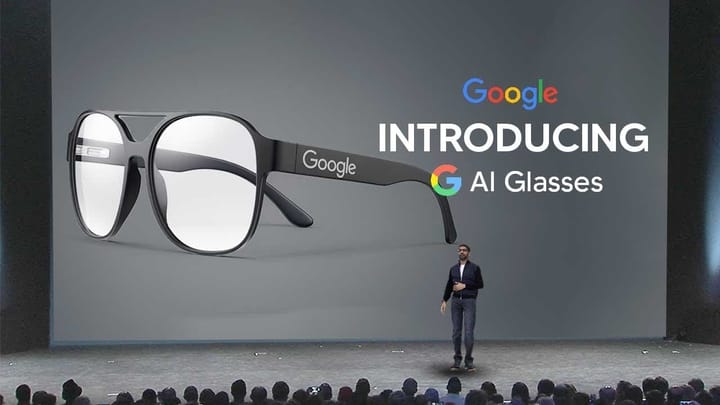The Vanishing Act - How Troxler Effect Reveals Our Brain's Efficiency

Unveiling the Troxler Effect: A Mind-Bending Optical Illusion What is the Troxler Effect? The Troxler effect, discovered by Swiss physician Ignaz Paul Vital Troxler in 1804, is an optical illusion that manipulates our visual perception. This phenomenon has fascinated scientists and the general public alike for centuries, offering valuable insights into the workings of our brain. How Does the Troxler Effect Work? This phenomenon occurs when we fixate on a specific point, causing stationary images in our peripheral vision to fade away and disappear. To experience the Troxler effect firsthand, try this simple experiment: Stare fixedly at a central point, such as a dot or a small object. Notice the objects or patterns in your peripheral vision. Maintain your focus on the central point without blinking or shifting your gaze. Observe how the peripheral objects or patterns gradually fade away. The Science Behind the Troxler Effect The Troxler effect is not due to any defect in our eyes, but rather an efficient processing mechanism of our brain. When we focus on a specific point, our brain prioritizes the information from the central vision over the peripheral vision. This prioritization leads to the suppression of signals from the peripheral vision, causing the stationary images to disappear. Implications of the Troxler Effect The Troxler effect has significant implications for our understanding of visual perception and cognitive processing: Efficient information processing: The Troxler effect demonstrates how our brain efficiently filters out irrelevant information, allowing us to focus on what's important. Visual perception: This phenomenon highlights the dynamic nature of visual perception, where our brain actively constructs and reconstructs reality. Neural adaptation: The Troxler effect showcases neural adaptation, where our brain adjusts to constant stimuli by reducing sensitivity. Conclusion The Troxler effect is a remarkable demonstration of our brain's efficiency and adaptability. By understanding this phenomenon, we gain insights into the intricate mechanisms governing our visual perception and cognitive processing.The Science Behind the Troxler Effect
Unlocking the Mechanisms of Visual Perception
The Troxler effect, named after Swiss physician Ignaz Paul Vital Troxler, who first discovered it in 1804, offers fascinating insights into our brain's efficiency in processing visual information. Efficiency Through Filtering
Prioritizing Relevant Information
The Troxler effect is attributed to the brain's tendency to prioritize efficiency, filtering out unnecessary information. This mechanism allows our brain to focus on relevant stimuli, ensuring we process only essential data. By suppressing peripheral images when concentrating on a central stimulus, our brain minimizes visual noise, enhancing our ability to focus. Suppressing Peripheral Images
The Role of Central and Peripheral Vision
When we focus on a central stimulus, our brain suppresses the surrounding images to minimize visual noise. This phenomenon demonstrates the dynamic interplay between central and peripheral vision. Central vision provides detailed information about our focal point, while peripheral vision offers contextual awareness. The Troxler effect highlights how our brain balances these two aspects to optimize visual processing. The Dynamic Interplay Between Brain and Eyes
Neural Adaptation and Visual Perception
This effect underscores the remarkable adaptability of our brain and eyes in processing visual information. The Troxler effect shows that our brain is not a passive receiver of visual data but an active participant, constantly interpreting and adjusting to optimize our perception of reality.
Key Factors Influencing the Troxler Effect
The Troxler effect, a fascinating phenomenon where our brain inadvertently erases stationary images from our visual perception, is influenced by several key factors. Understanding these factors sheds light on the intricacies of our brain's processing mechanisms and its tendency to optimize efficiency.
1. Duration of Focus: The Prolonged Fixation Effect
One of the primary factors influencing the Troxler effect is the duration of focus. The longer we fixate on a particular point, the more pronounced the fading effect becomes. This suggests that our brain's processing resources are dynamically allocated, prioritizing information that changes or updates over static stimuli. As we maintain focus, the static image is gradually deemed less relevant, leading to its gradual disappearance from our conscious perception.
2. Distance from Fixation Point: Peripheral Vulnerability
Another significant factor is the distance of the image from the fixation point. Images located peripherally are more susceptible to fading than those closer to the center of focus. This peripheral vulnerability highlights the brain's selective attention mechanisms, where resources are concentrated on the central, most relevant information, while peripheral details are gradually discarded.
3. Stimulus Complexity: Simple vs. Complex Patterns
The complexity of the stimulus itself also plays a crucial role in the Troxler effect. Simple shapes and colors are more likely to fade into the background than complex patterns or images. This distinction underscores the brain's preference for processing novel, intricate information over mundane, predictable stimuli. Complex patterns demand more cognitive resources, making them more resistant to the fading effect.
By examining these factors, we gain insight into the Troxler effect's underlying mechanisms and, by extension, the remarkable efficiency of our brain's visual processing system. This phenomenon serves as a poignant reminder of the dynamic interplay between perception, attention, and cognitive resource allocation.
Real-World Implications of the Troxler Effect The Troxler effect has far-reaching implications that extend beyond the realm of optical illusions and into our daily lives.
Improving Visual Attention and Focus
Understanding the Troxler effect can inform strategies for visual attention and focus. By recognizing how our brains process and filter visual information, we can develop techniques to enhance concentration and reduce distractions. For instance, breaking tasks into smaller, focused intervals can help mitigate the Troxler effect's influence on our perception.
Enhancing Visual Engagement in Advertising, Design, and Art
Applications in advertising, design, and art can leverage the Troxler effect to create engaging visuals. By incorporating dynamic elements, movement, or subtle changes, creators can capture and maintain viewers' attention. This knowledge can be used to design more effective billboards, advertisements, and digital content.
Advancing Our Understanding of Human Perception and Cognitive Processing
Research on the Troxler effect contributes significantly to our understanding of human perception and cognitive processing. Studying this phenomenon sheds light on the complex interactions between the brain, eyes, and visual information. This knowledge can be applied to various fields, including psychology, neuroscience, and human-computer interaction.
Practical Applications Across Industries
The implications of the Troxler effect extend to various industries: Education: Developing interactive learning materials that incorporate dynamic visual elements can improve student engagement. Marketing: Creating captivating advertisements that adapt to the Troxler effect can increase brand recognition. Healthcare: Understanding visual perception can inform the design of medical imaging and diagnostic tools.
Unlocking New Avenues for Research
Further exploration of the Troxler effect can unlock new avenues for research, including: Investigating individual differences in susceptibility to the Troxler effect Examining the effect's relationship with attention-deficit/hyperactivity disorder (ADHD) Developing interventions to improve visual attention and processing By exploring the real-world implications of the Troxler effect, we can unlock its potential to improve various aspects of our lives.Conclusion: The Enduring Fascination of the Troxler Effect The Troxler effect continues to captivate scientists and enthusiasts alike with its intriguing demonstration of our brain's efficiency. This phenomenon, first discovered by Ignaz Paul Vital Troxler in 1804, has been a subject of fascination for over two centuries. Its ability to reveal the dynamic interplay between our visual system and brain function makes it a compelling area of study. Unveiling the Brain's Adaptive Mechanisms The Troxler effect showcases our brain's remarkable ability to adapt and filter information. By habituating us to static visual stimuli, our brain optimizes its processing resources, allowing us to focus on more critical and dynamic aspects of our environment. This efficient processing enables us to navigate complex visual landscapes with remarkable ease. Implications for Understanding Human Perception Further exploration of this phenomenon can reveal valuable insights into the intricacies of human perception. By examining how our brain processes and filters visual information, researchers can gain a deeper understanding of: Visual attention: How our brain selectively focuses on specific stimuli while ignoring others. Neural plasticity: How our brain reorganizes itself in response to changing visual environments. Perceptual biases: How our brain's processing mechanisms influence our interpretation of reality. Inspiring Future Research and Applications The Troxler effect's fascinating implications extend beyond the realm of neuroscience, offering potential applications in: Visual design: Informing strategies for effective visual communication and advertising. Clinical diagnosis: Providing insights into neurological disorders affecting visual perception. Artificial intelligence: Inspiring more efficient image processing algorithms. A Lasting Legacy of Discovery As scientists continue to unravel the mysteries of the Troxler effect, its significance extends beyond the scientific community. This phenomenon reminds us of the awe-inspiring complexity and efficiency of the human brain, inspiring new generations of researchers, artists, and thinkers to explore the intricate workings of our minds.











Comments ()